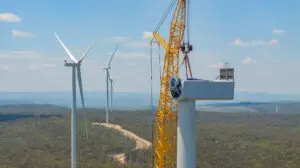
A frustrated local council in Western Australia has uncovered a backdoor avenue to ensure that at least some community benefits are built into the structure of renewable energy planning, even if developers do not appear to be keen.
The Narrogin shire council has found a way to include community benefits schemes within a project’s planning approval, creating a precedent that is likely to become the norm in WA.
The council almost won its first bid to make community benefits a formal condition of doing business last week, when the Regional Development Assessment Panel (DAP) approved South Energy’s proposed big battery, sized at 200 MW and four hours of storage (800 MWh).
The council wanted two riders included in the approval – a public art plan and a community enhancement fund – two elements that another developer, Ace Power, pushed back hard on in its own DAP hearing last week, this time for its $400 million solar and a 200 MW, four hour BESS.
Instead of including these as formal conditions, the DAP made them “advice notes”, where the developer is “encouraged” to voluntarily adhere to the shire’s public art strategy and its community enhancements fund policy.
But the panel also said that if either was a council policy, they would have made them conditions of the approval.
Narrogin has a public art plan strategy from 2019 rather than a policy. An error meant the DAP wasn’t aware the council does, in fact, have an adopted community benefits policy – suggesting that the outcome at Ace Power’s hearing in June may be different.
South Energy was contacted for comment but was not able to respond before publication.
Ace Power’s representative to the DAP hearing last week said the public art plan and benefits requirement the council wanted as a condition of the planning permit was not supported by any state planning framework, and the policy was only endorsed after it lodged the planning application.
“[These] require contributions to a yet to be established community enhancement fund, raising questions about its justification, fairness and legality,” Land Insights senior planner Rebecca Hampson Hampson told the panel.
Planners spoken to by Renew Economy suggest that if a formal council policy is the only thing holding local councils back from stuffing benefits into planning approvals, this is likely to set a precedent for councils around Western Australia, in the absence of more formal guidelines from the state government.
“We got the CEF [community enhancement fund] in an as advice note. it wasn’t what we were hoping for but at least it’s in there,” Narrogin shire council president Leigh Ballard told Renew Economy.
Community benefits have historically been negotiated outside formal planning approvals, but in Queensland and New South Wales (NSW )they are being built into the regulatory environment to stipulate what they should look like and how they should work.
Change is coming, communities must be cared for
Developers from Ace Power to Neoen have pushed back on the council’s community benefits push, saying it’s not part of the state planning regulations and therefore shouldn’t be included as part of a development application.
But this is irking Ballard, who says developers are happy to adapt policies from other states that have been adapted for renewables – but not community benefits.
“In Narrogin we’re at the forefront of CEF because there’s nothing else here. We found a fit-for-purpose CEF from NSW, but no one wants to use it,” he says.
“[But] the proponents are happy to use the Victoria CFA’s bushfire management plan, because their guidelines are specifically around renewables, rather than WA’s which is around habitable dwellings and is not fit for purpose.”
The Narrogin shire council in particular has taken matters into its own hands and done some of the heavy lifting over the last two years on pushing renewable energy guidelines along, with a strong community focus.
In November last year it issued a guide for landowners negotiating with renewables developers, and early in 2025 pitched a plan to the state government on how to create a New South Wales (NSW) -like renewables framework for the state.
Its own policy wants developers to negotiate a legally-binding CEF with the council before they start on a project which pays annual minimums of $150/MWh for batteries, $1,050/MW for wind, and $850/MW for solar.
The reason is a bad experience and an understanding that rural communities are about to change forever, and developers need to recognise that.
“One of the biggest things, from our council’s perspective, is we’re getting industrialisation pushed onto us by the state government,” Ballard says.
“Which is fine if it’s going to deliver for the community.
“Our communities are going to change. But if there is no social licence from these companies to come in and do that, the community won’t be on board.”
Ballard says what they’re fearful of is a repeat of a project called Flat Rocks wind farm being developed by Potentia Energy, about an hour south of Narrogin.
Ballard says the project “left a bad taste” locally due to bad planning and management. It saw turbines follow old rules for boundary setbacks of just 20m – fine for sheds but less suitable for 300m-high turbines.
“That’s the kind of thing we’re asking the state to improve,” he says.








